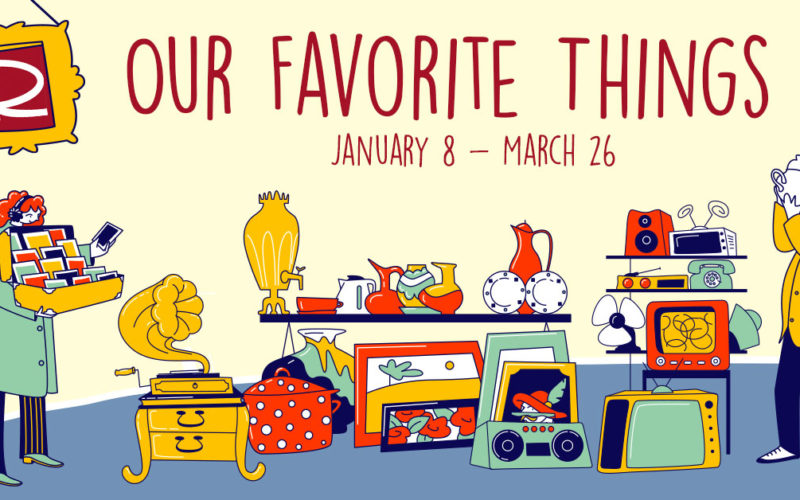BECCA MARTIN-BROWN
bmartin@nwaonline.com
It’s that time again, the time when new year’s resolutions lead to upended closets, trips to Goodwill and the Samaritan Shop — dropping off everything you’ve outgrown and picking up new-to-you storage solutions — and promises to limit acquisition and promote minimalism.
Thank goodness none of that’s true if you run a museum! Instead, Rogers Historical Museum folks gathered up their favorite things and created an exhibit, which remains open through March 26.
“In a typical year, the Rogers Historical Museum can only display a small portion of its massive collection of objects,” says Serena Barnett, RHM director. “’Our Favorite Things’ gives our museum staff an opportunity to exhibit their personal favorites by picking some of the most unique and often overlooked items in our collection. Along with seeing some rare pieces, visitors will also get the chance to vote on their own favorite things.”
Rogers Historical Museum
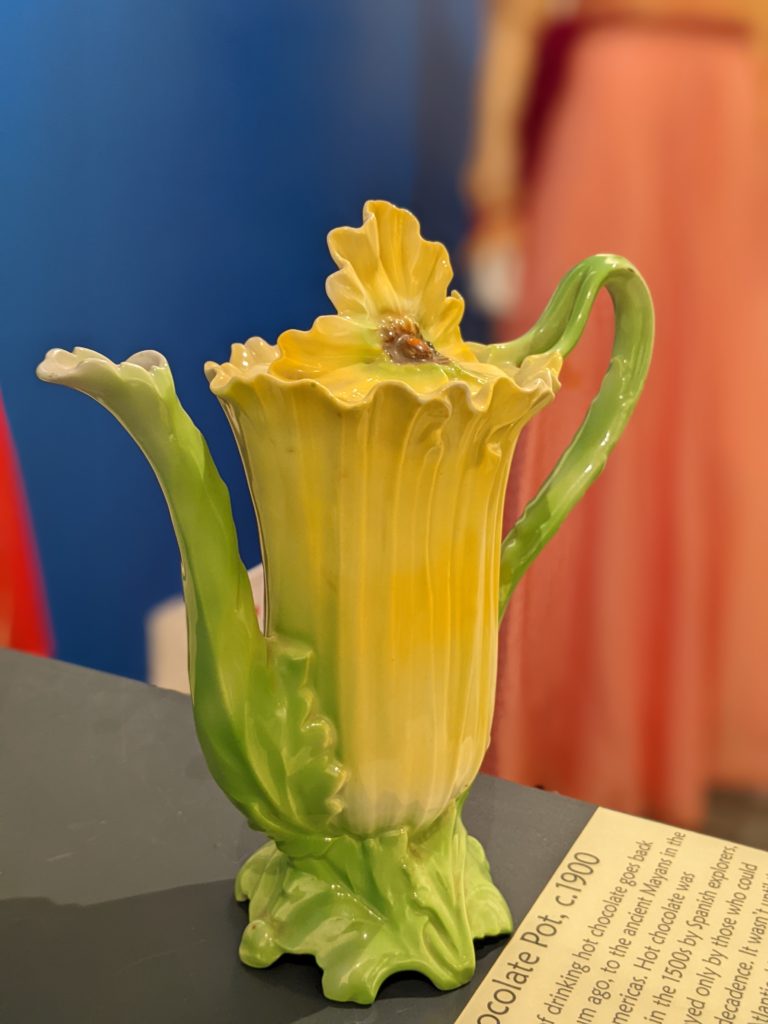
Poppy Chocolate Pot
The history of drinking hot chocolate goes back over a millennium ago, to the ancient Mayans in the pre-Columbian Americas. Hot chocolate was brought to Europe in the 1500s by Spanish explorers, but it was a drink enjoyed only by those who could afford such an exotic decadence. It wasn’t until the late 1800s when trans-Atlantic shipping became faster and less costly that hot chocolate became more affordable, and therefore available to the wider public. This chocolate pot is one of Rogers Historical Museum’s earliest donated objects, given by Vera Key. It was made sometime between 1900-1915 by Royal Bayreuth, a German porcelain manufacturing company known for their novelty designs.
Serena Barnett: “The fanciful design and the vivid yellow and green colors of this chocolate pot has always caught my eye whenever it’s on display in the Hawkins House dining room. It reminds me of another time when seemingly small tasks, as in the practice of serving hot chocolate, socially dictated the need to own such specialty items that were made for use and show, even for intimate occasions where you were surrounded by family and friends in the comfort of your own home.”
Woods Family Coverlet
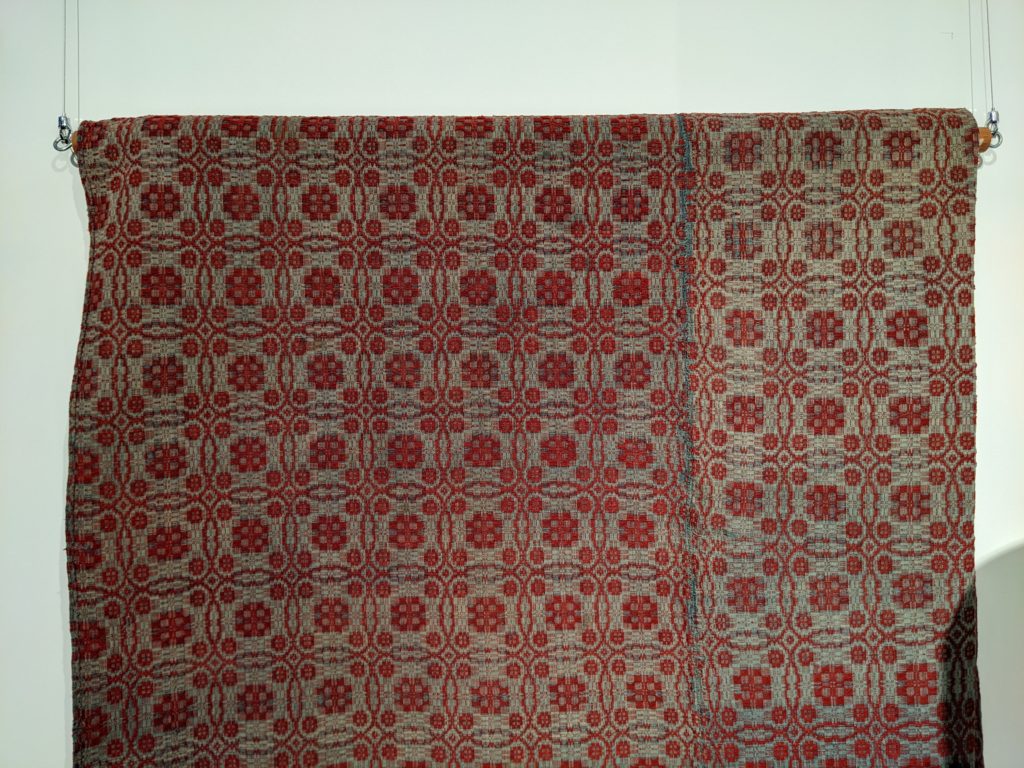
Coverlets are woven on looms and were commonly used as bedspreads as far back as the Colonial America period. This coverlet features the classic Whig Rose pattern considered to be in honor of the political Whig Party in opposition to President Andrew Jackson in 1834. It was woven by Elizabeth Greaves Dickson Woods, whose husband served on the first Grand Jury in Benton County. Elizabeth was born in 1809 and moved with her family to Benton County in 1832. Today, the site of their farm is located in Rogers at Woods Lane, east of the Northwest Arkansas Community College.
Monte Harris, adult programs educator: “It is probably the oldest textile that we have of Benton Country history, and it is one of the few very old items that we can say without a doubt it’s truly a Benton County owned artifact, through the Woods [family] line. Also, it is very beautiful.”
Evening Gown
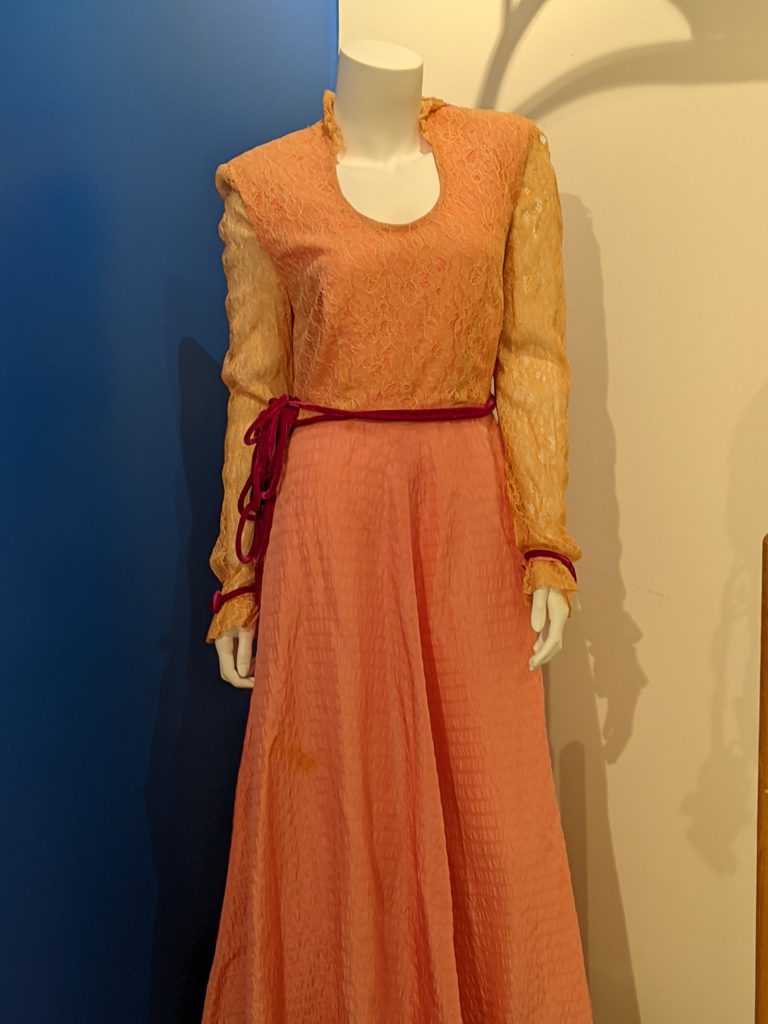
This evening gown made circa 1960 was owned by Vera Key. Ms. Key was a remarkable lady who was born at War Eagle in 1893. A prominent Rogers family, the Blackburns were the founders of War Eagle and were related to Vera on her mother’s side. Among other achievements and endeavors, Vera helped create the Rogers Historical Museum in 1974, as well as served on its commission until 1978. The Rogers Historical Museum’s Key Wing building is named in honor of her and her dedication to the museum.
Ashley Sayers, education manager: “I have always found this to be a pretty dress, and I like the fashion from the 1950s/1960s. And because it is a textile, it doesn’t get displayed very often.”
Roy Rogers Lunch Box
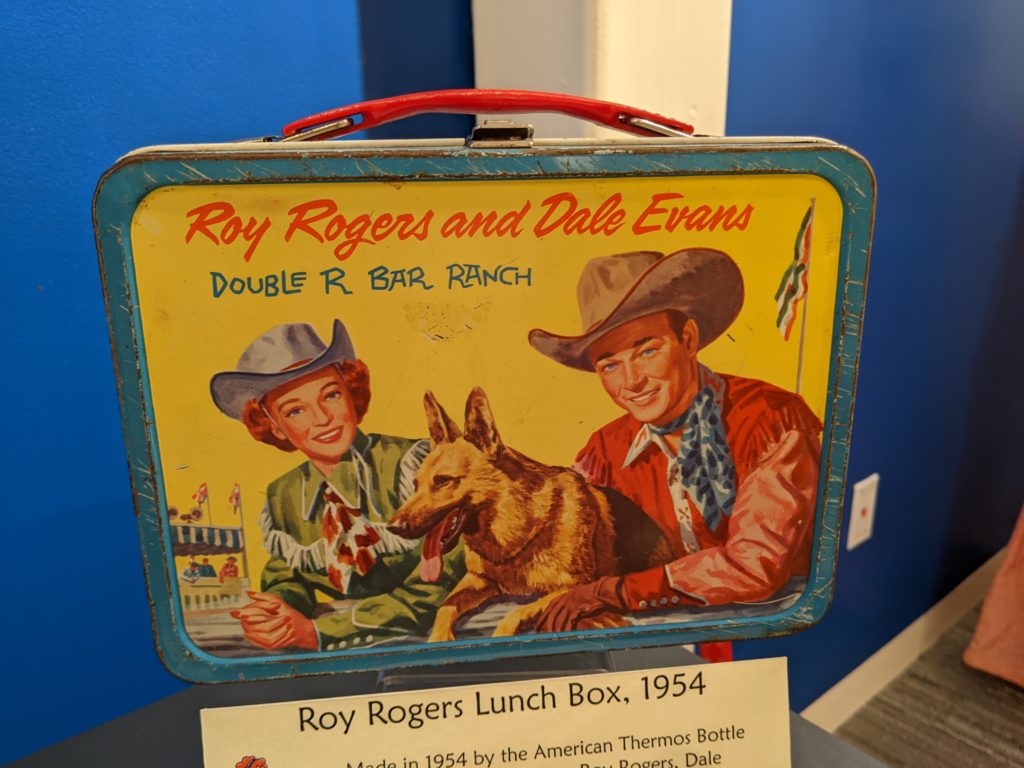
Made in 1954 by the American Thermos Bottle Co., this lunch box features Roy Rogers, Dale Evans and Bullet the Wonder Dog on one side while the other side features Roy on his Palomino horse Trigger roping a steer with Dale Evans riding in the back. “The Roy Rogers Show” ran from 1951 to 1957. This lunch box belonged to Theresa Hill of Rogers.
Luke Brewer, outreach specialist: “One of my hobbies is collecting vintage lunch boxes from the 20th century. My interest in lunch boxes may have started when I was in the second grade: I had a metal Dukes of Hazzard lunch box. I was the coolest. Most people just used it for lunch, but for me, it was also a pretend cargo ship bringing food supplies to my giant robot mouth. Thinking about it now … it’s possible that I wasn’t the coolest.”
Shadow Box
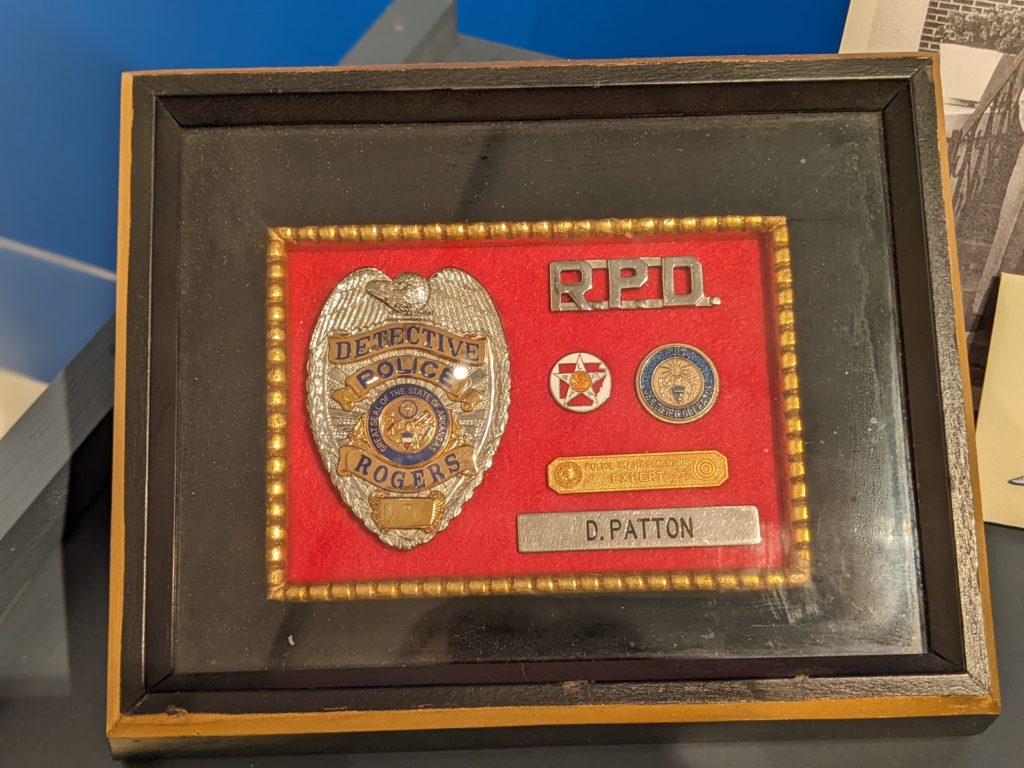
This shadow box contains the badge and pins worn by Dennis Patton as an officer and detective for the Rogers Police Department between 1972 and 1980.
Debbie Patton, museum guide: “I picked this item as it belonged to my late husband, Dennis.”
__
FAQ
Rogers Historical Museum
WHEN — 10 a.m.-4 p.m. Tuesday through Saturday
WHERE — 313 S. Second St. in Rogers
COST — Free
INFO — 621-1154; rogershistoricalmuseum.org

